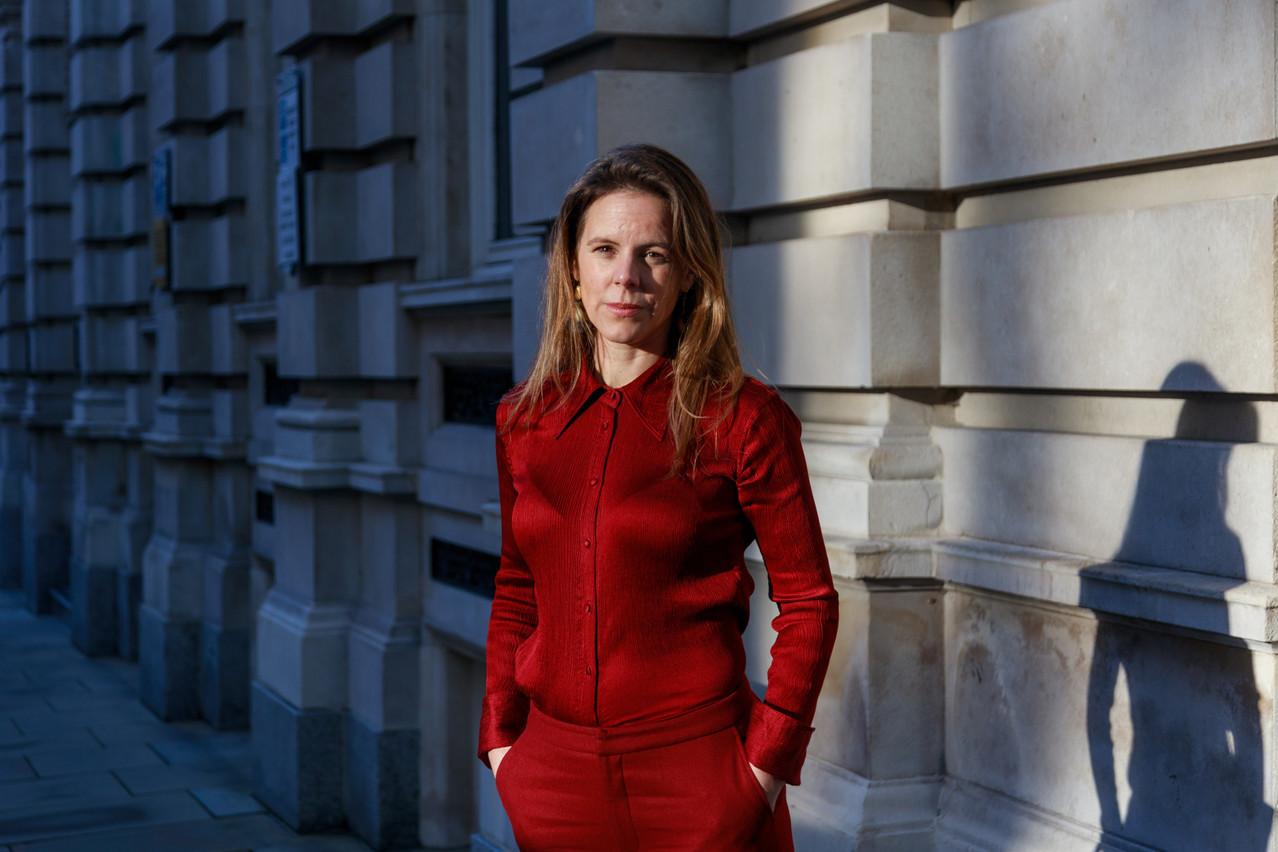“The criticism of some mutual funds would have been that they were benchmark huggers,” said Jill Rootsaert, head of ETF distribution in Benelux at JP Morgan Asset Management in an interview in Luxembourg on 13 July 2023.
She was speaking a few days before Jamie Dimon came to town to celebrate the 50th anniversary of JP Morgan Chase & Co in the grand duchy. The bank now counts more than 800 employees here, active in wealth management, corporate banking, asset servicing, asset management and payments.
During her interview with Delano, Rootsaert opined that mutual funds have been criticised for the “very little active tilt,” the high fees for the “return they could potentially deliver.”
Passive ETF, not so passive after all
“A passive ETF portfolio manager is also making active calls,” said Rootsaert. They must regularly rebalance the portfolio to keep the portfolio “as close to the benchmark as possible.” She explained that many passive ETFs don’t hold every stock because they are “too small or because of the trading or the fiscal cost.”
Yet, it is generally accepted that a passive ETF is “whatever tracks the benchmark” with a minimal tracking error.
Alpha generation through stock selection only
Going into the mechanics of the active ETF, Rootsaert explained that the risk profile of an active ETF needs to be the same as for an index such as the global MSCI World. Contrary to a mutual fund, an active ETF maintains a neutral stance in terms of sectors, regions and investment style.
The goal is to create alpha through the weighting of individual stocks (overweight or underweight against a benchmark) to take advantage of their extensive research platform. As a result, the tracking error of an active ETF is expected to be smaller than a mutual fund.
JPM AM applies a double materiality in its security selection. It reviews the fundamental profile of a company and applies ESG exclusions. Rootsaert noted that they may not hold a stock contained in the benchmark because it is illiquid or due to the lack of coverage inhouse.
Performance versus objective
The US active equity ETFs aims at generating an alpha target of 60 bps (after fees) above the S&P 500, whereas it is 75 bps for the other equity active ETFs. The Global, Europe, Emerging Markets and US exposure ETFs will be four years old in November and “all of them have outperformed since inception,” stated Rootsaert.
More recently, JPM AM launched ETFs covering UK, Eurozone, China A, Asia-Pacific-ex-Japan and Japan with a 75 bps alpha target. It is worth mentioning that none of the active ETFs have been discontinued since they launched.
Reviewing the performance of the Global Research Enhanced Index Equity (ESG) UCITS ETF, one could note that it has beaten the benchmark (MSCI World Index) since inception (10 October 2018) with an overall annualised excess return of +1.15% against an alpha target of 75bps.
Importantly the tracking error was maintained at the relatively low level of 0.68 resulting into an information ratio 1.69 (excess return per unit of risk or tracking error). The information ratio is a crucial performance metric to evaluate risk-adjusted returns and to assess a track record consistency for mutual funds and ETFs. An i in the 0.40-0.60 range is considered as quite good.
It is well-known, researched and reported that active equity mutual funds underperform passive ETFs in the long run. The popular Morningstar U.S. active/passive Barometer reported a success rate of only 43% in 2022 down from 47% in 2021 for “active funds against their average passive peers” across 20 categories.
If you have a period of underperformance, you know exactly what you're gonna get because you can have a maximum of tracking error of 1%
Unsurprisingly, JPM AM looked at the best 25% US equity funds and concluded that their success rate would be “much higher” than the figure communicated in Morningstar report.
Once accounting for the survivorship bias, Rootsaert concluded that this favours the asset management firms that have been around for decades with consistent strategies over time and with significant research budgets.
Downside risk
“If you have a period of underperformance, you know exactly what you’re gonna get because you can have a maximum of tracking error of 1%,” said Rootsaert. She considers the risk of deviation against a benchmark as limited “because we stay so close to the benchmark.”
Attractive business for the bottom line of JPM AM
“It'’s always cheaper to run an ETF than a mutual fund […] operating cost, everything,” said Rootsaert. Moreover, the active ETF business could draw upon the global research platform of its mutual fund and mandate businesses, a resource that is now shared among a greater number of product and asset under management. Rootsaer estimated the active ETF business amounts to 50% of the asset under management in ETF vehicles at JP Morgan Asset Management.
Rootsaert observed that the new business brought in unexpected opportunities. “So you’re augmenting your potential clientele by bringing in new offers [….] and new usage in a portfolio because professional investors could buy an active strategy in a mutual fund or in a mandate whichever way you want it with a higher fee and a higher risk budget.”
Growing business
JPM AM sees a potential for growth as “the US active ETFs represent 5% and in Europe, that’s only 2%,” said Rootsaert. She added that the: “annual growth rate in terms of net flows is much faster […] in the active ETFs than it is in the passive ETFs.” JPM AM experienced US inflows in 2022 (+15%) and year-to-date (+33%). According to a survey published by , “nearly 80% of respondents in the Americas stated they would be more inclined to invest in an active strategy if packaged as an ETF rather than a mutual fund.”
